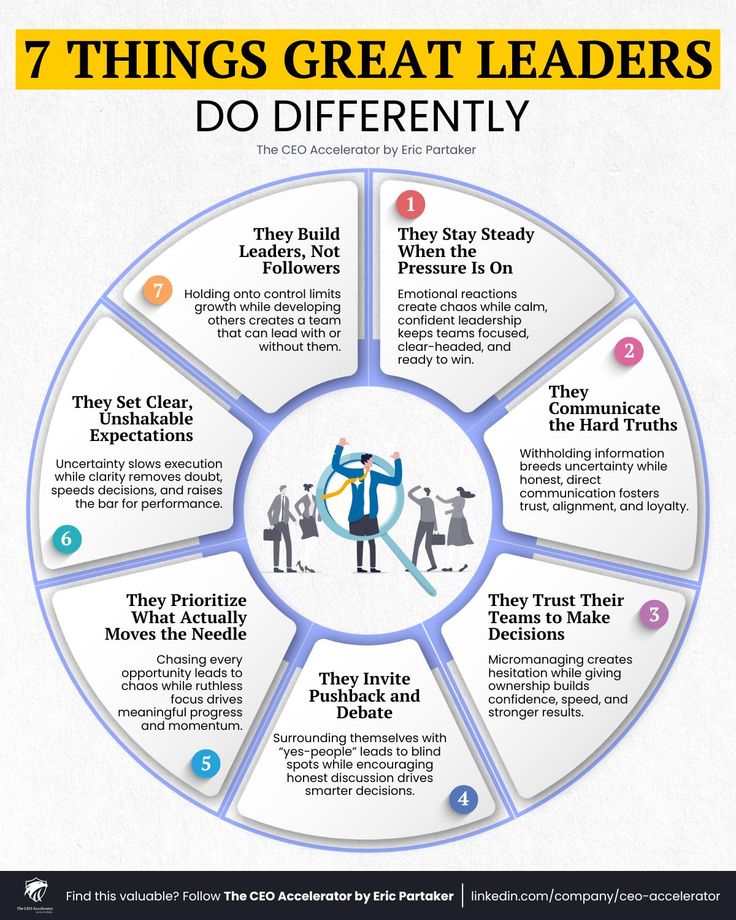Theories of Leadership
Comprehensive Notes on Theories of Leadership
1. Introduction to Leadership Theories
Leadership
theories explain how and why certain individuals become leaders and how they
influence others. These theories have evolved over time, focusing on traits,
behaviors, situations, and transformational approaches.
2. Major Leadership Theories
A. Trait Theory (Great Man Theory)
- Key Idea: Leaders are born with inherent traits that make
them effective.
- Proponents: Early theorists like Thomas Carlyle (1840s).
- Key Traits:
- Intelligence
- Confidence
- Charisma
- Decisiveness
- Emotional intelligence
- Criticism:
- Ignores situational factors.
- Not all leaders possess the
same traits.
B. Behavioral Theories
Focuses
on leaders' actions rather than innate qualities.
1. Ohio State Studies (1945-1950s)
- Identified two key leadership behaviors:
- Initiating Structure
(Task-Oriented): Focus
on goals, deadlines, and procedures.
- Consideration
(People-Oriented): Focus
on relationships, trust, and employee well-being.
2. Michigan Studies (1950s)
- Similar to Ohio State but classified leadership as:
- Employee-Centered
(Relationship-Oriented)
- Production-Centered
(Task-Oriented)
3. Blake and Mouton’s Managerial Grid (1964)
- Combines concern for people and
production in a 9x9 grid.
- Five leadership styles:
- Impoverished (Low People, Low
Production)
- Country Club (High People, Low
Production)
- Authority-Compliance (Low
People, High Production)
- Middle-of-the-Road (Moderate
People & Production)
- Team Leader (High People, High
Production) – Best style.
C. Contingency (Situational) Theories
Leadership
effectiveness depends on the situation.
1. Fiedler’s Contingency Model (1967)
- Leadership style is fixed
(either task-oriented or relationship-oriented).
- Effectiveness depends on:
- Leader-member relations
- Task structure
- Position power
- Least Preferred Coworker (LPC)
Scale measures leadership
style.
2. Hersey-Blanchard Situational Leadership
Theory (1977)
- Leaders must adapt style based
on followers' maturity (ability & willingness).
- Four leadership styles:
- Telling (Directive) – Low maturity
- Selling (Persuasive) – Moderate maturity
- Participating (Supportive) – High ability but low confidence
- Delegating (Empowering) – High maturity
3. Path-Goal Theory (House & Mitchell,
1974)
- Leaders help followers achieve
goals by providing guidance and support.
- Four leadership styles:
- Directive (Clear instructions)
- Supportive (Friendly, approachable)
- Participative (Consults team)
- Achievement-Oriented (Sets high standards)
D. Transformational & Transactional
Leadership (Burns & Bass, 1978-1985)
1. Transactional Leadership
- Based on rewards and
punishments.
- Focuses on short-term goals and
compliance.
- Key Features:
- Contingent rewards
- Management by exception
(active/passive)
2. Transformational Leadership
- Inspires and motivates
followers to exceed expectations.
- Four Components (4 I’s):
- Idealized Influence (Charisma)
- Inspirational Motivation (Vision)
- Intellectual Stimulation (Encourages innovation)
- Individualized Consideration (Mentorship)
E. Servant Leadership (Greenleaf, 1970)
- Leaders prioritize serving
others before themselves.
- Key Traits:
- Empathy
- Listening
- Stewardship
- Community-building
F. Authentic Leadership
- Leaders act with transparency,
ethics, and self-awareness.
- Key Aspects:
- Self-regulation
- Balanced processing of
information
- Relational transparency
3. Emerging Leadership Theories
- Charismatic Leadership: Leaders inspire through personality and charm.
- Adaptive Leadership: Leaders help organizations adapt to change.
- Distributed Leadership: Leadership is shared across team members.
4. Conclusion
Leadership
theories have evolved from trait-based to more dynamic, situational, and
transformational approaches. The best leadership style depends on context,
followers, and organizational goals.
References:
- Bass, B. M. (1985). Leadership
and Performance Beyond Expectations.
- Hersey, P., & Blanchard, K.
H. (1977). Management of Organizational Behavior.
- Fiedler, F. E. (1967). A
Theory of Leadership Effectiveness.
1. Trait-Based Theories
Great Man Theory (1840s) – Leaders are born, not made.
Trait Theory – Focuses on innate qualities (e.g., intelligence, charisma).
2. Behavioral Theories
Ohio State Studies (Initiating Structure vs. Consideration).
Michigan Studies (Employee-Centered vs. Production-Centered).
Blake & Mouton’s Managerial Grid (Concern for People vs. Production).
3. Contingency (Situational) Theories
Fiedler’s Contingency Model (Leadership style is fixed; depends on situational favorability).
Hersey-Blanchard Situational Leadership (Adapts style to follower maturity).
Path-Goal Theory (Leaders clarify paths to goals based on follower needs).
Vroom-Yetton-Jago Decision-Making Model (Leader’s decision style depends on situation).
4. Transactional & Transformational Theories
Transactional Leadership (Rewards/punishments, short-term focus).
Transformational Leadership (Inspires change via vision and charisma – Bass’s 4 I’s).
Charismatic Leadership (Weber, House) – Influence through charm and persuasion.
5. Modern & Emerging Theories
Servant Leadership (Greenleaf) – Leaders serve first.
Authentic Leadership (Transparency, ethics, self-awareness).
Adaptive Leadership (Heifetz) – Leading through change.
Distributed/Shared Leadership – Leadership is a collective process.
Leader-Member Exchange (LMX) Theory – Focuses on leader-follower relationships.
Complexity Leadership Theory – Leadership in adaptive, unpredictable systems.
Quick Summary Table
| Category | Key Theories |
|---|---|
| Trait-Based | Great Man, Trait Theory |
| Behavioral | Ohio State, Michigan, Managerial Grid |
| Situational | Fiedler, Hersey-Blanchard, Path-Goal |
| Transactional/Transformational | Bass’s Model, Charismatic Leadership |
| Modern/Emerging | Servant, Authentic, Adaptive, LMX |











Comments
Post a Comment